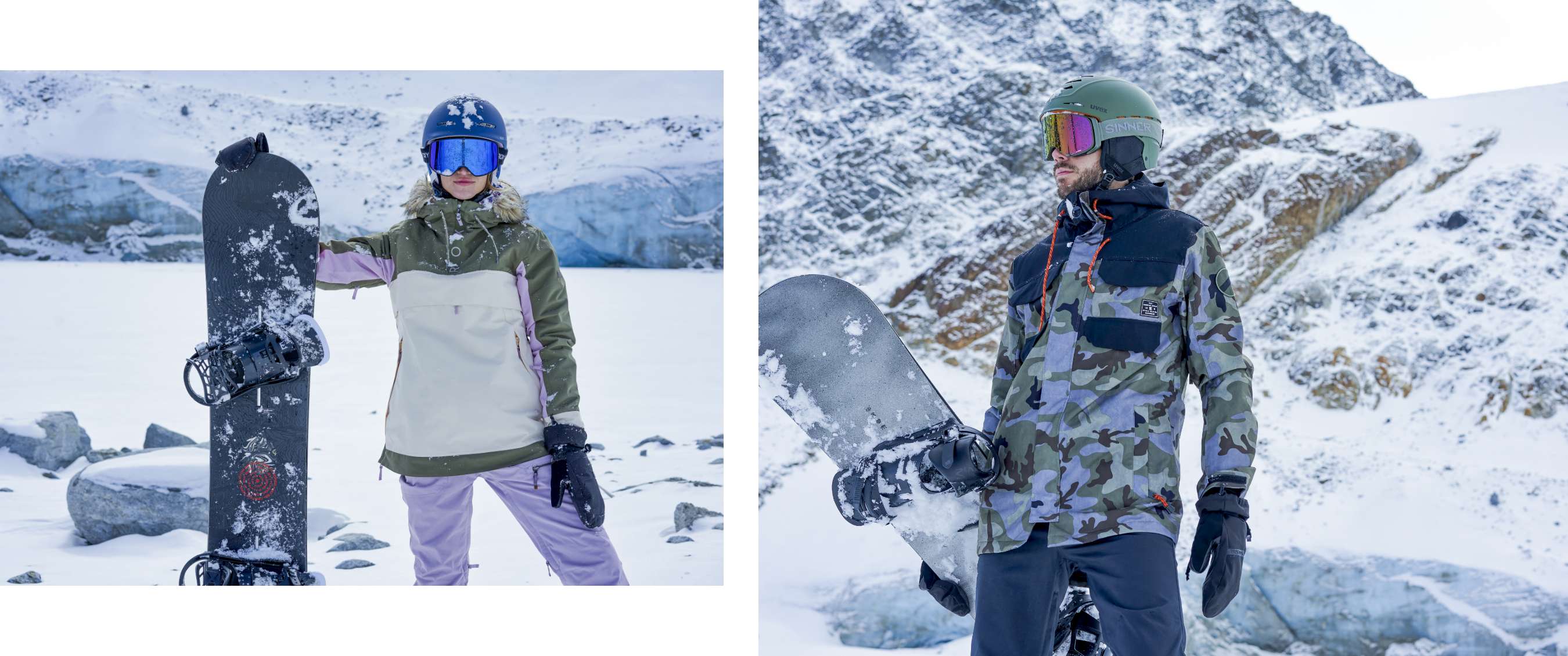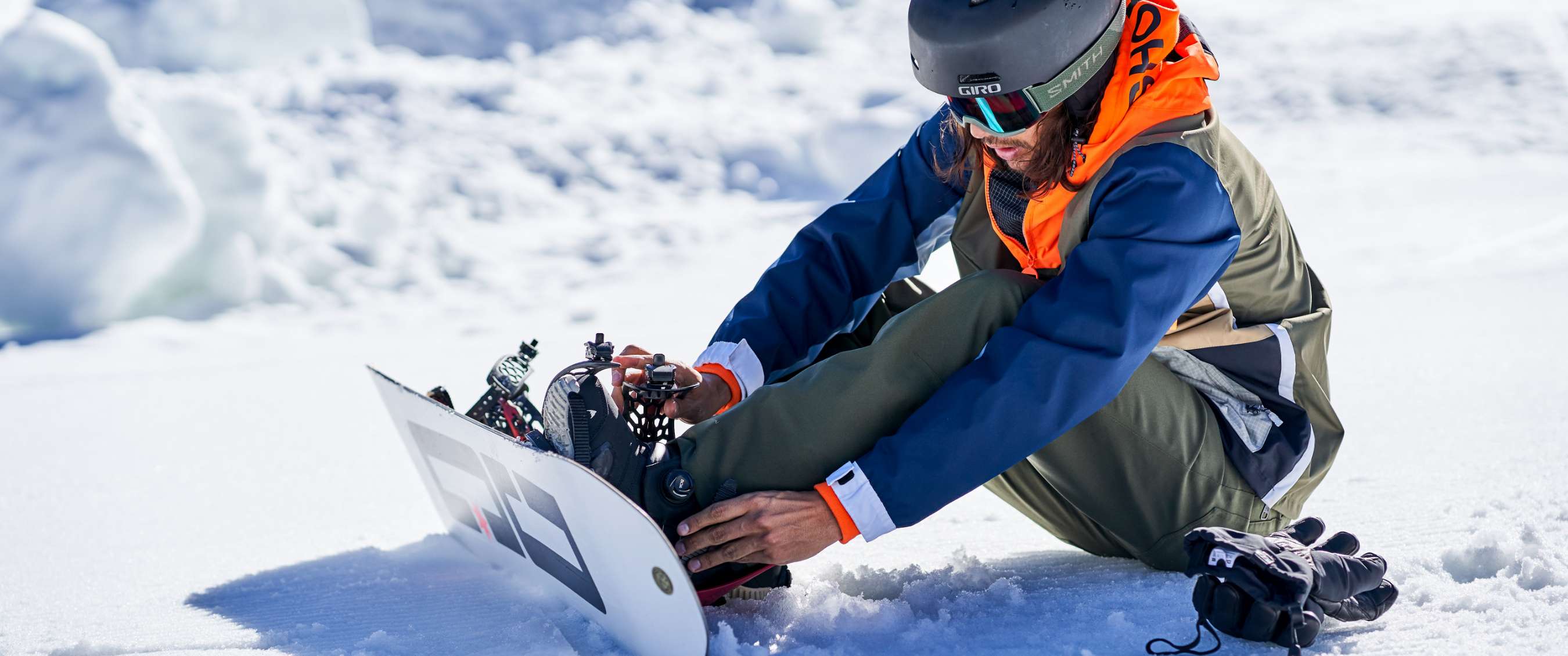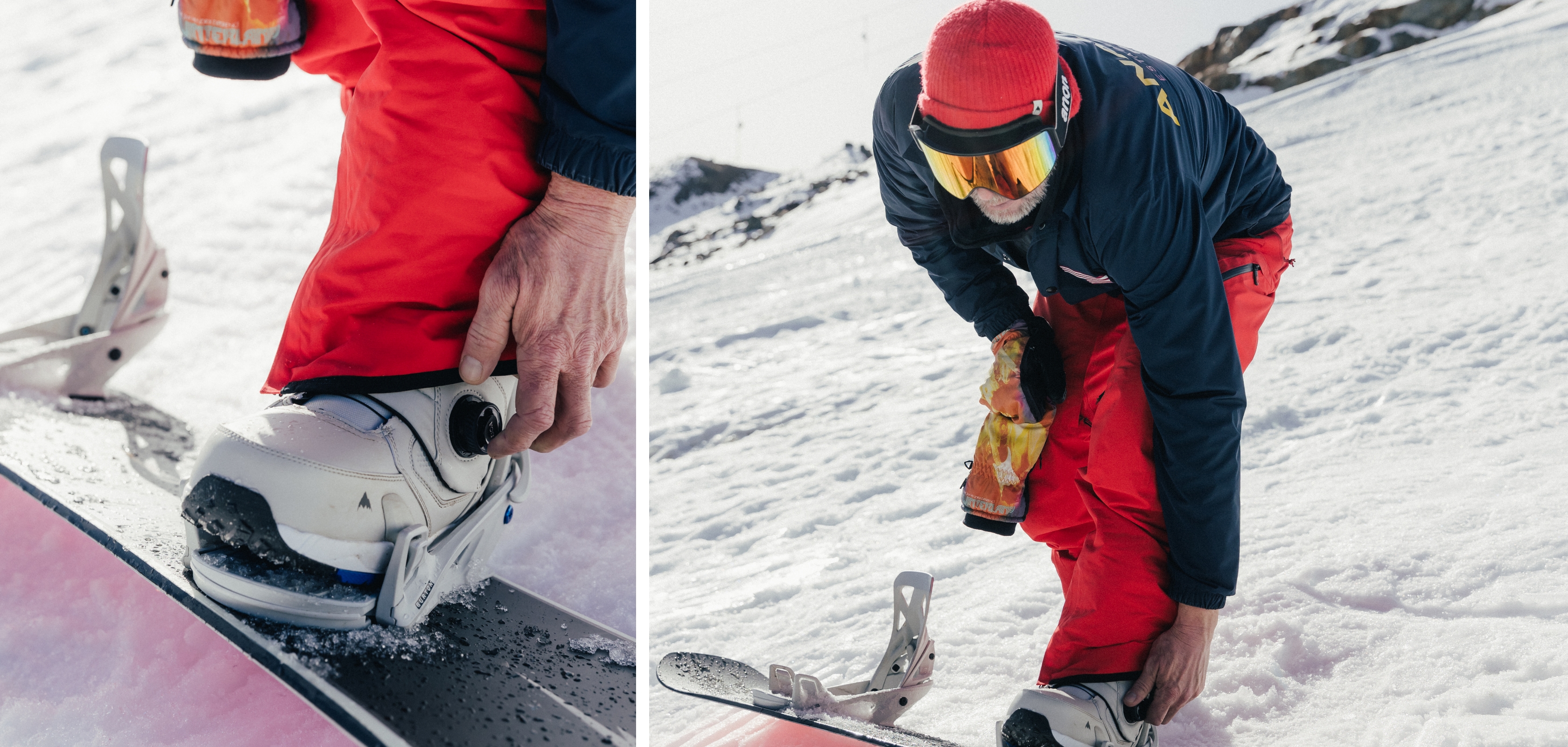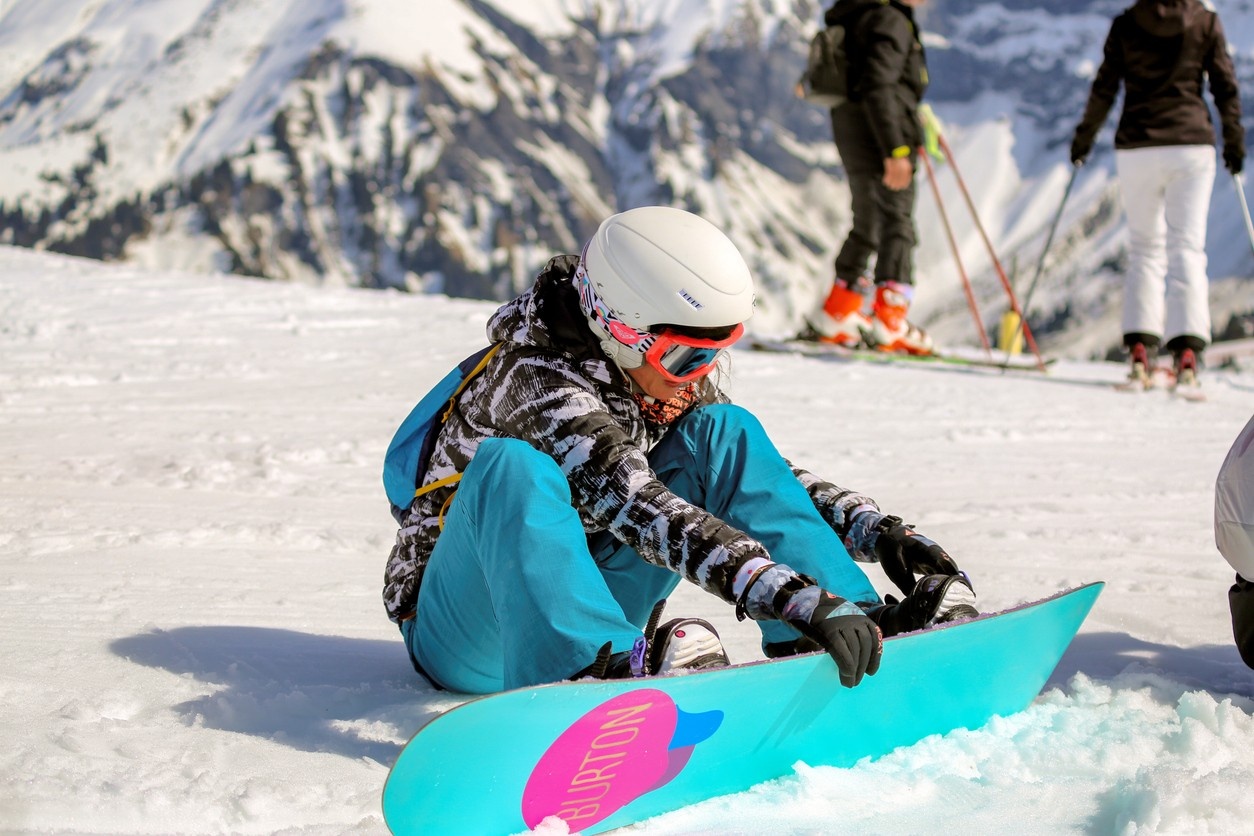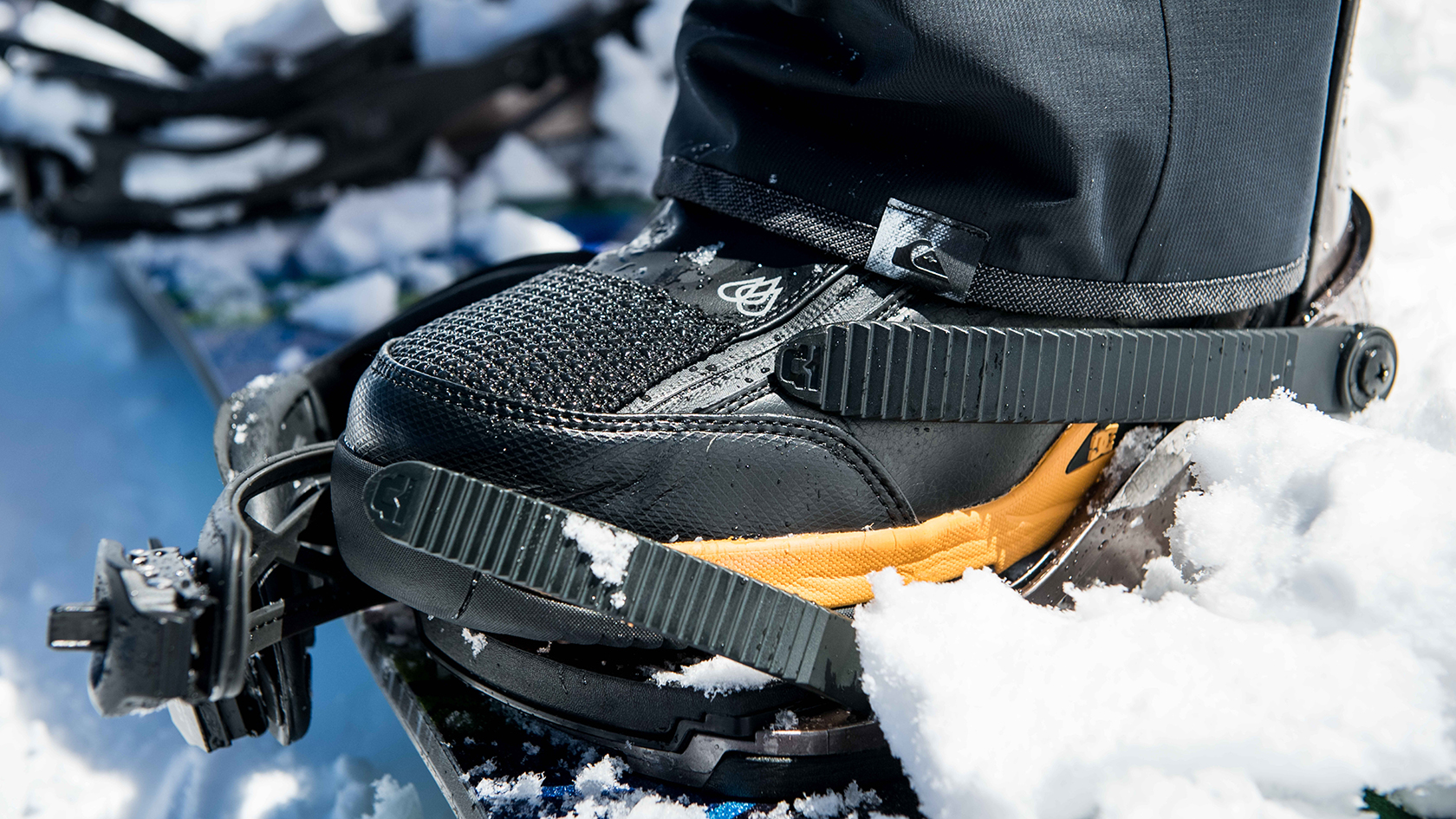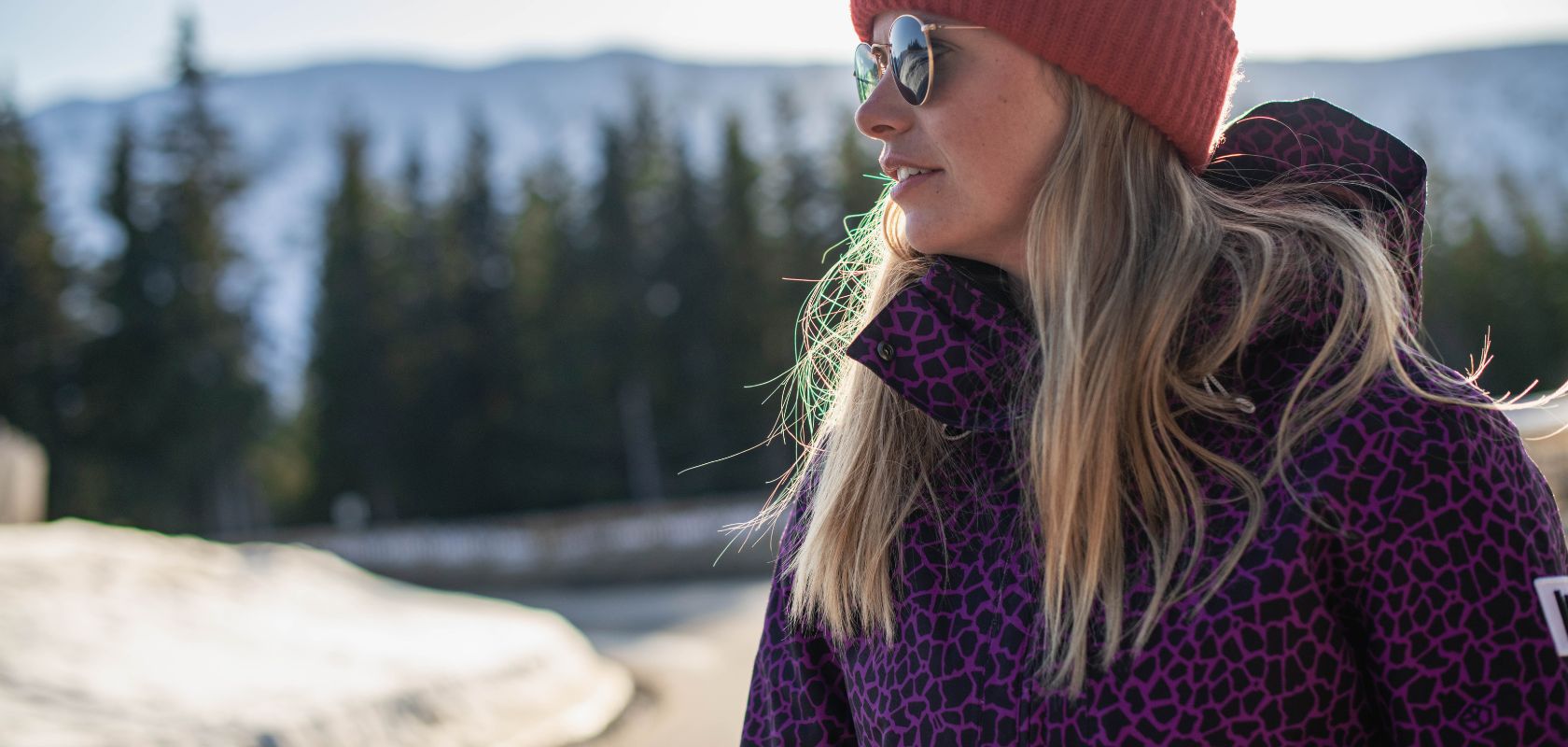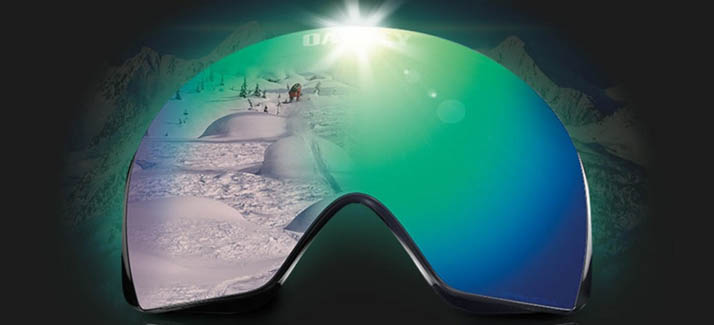Snowboard Bindings Buying Guide
Your boots are fitted. You've chosen your board. Now don't forget one of the most important parts of your setup. Your bindings aren't just there to match your boots and board: they connect you to your board, delivering power from your body and controlling how you move. Good bindings help you to control your board easily, absorb vibrations and keep you feet comfortable for days on the mountain.
What Are Snowboard Bindings?
Snowboard bindings are the hardware that securely attaches your boots to your snowboard, ensuring you remain in control at all times. They come in a variety of types, flex ratings, and designs, each tailored to different riding styles, skill levels, and personal preferences. Bindings are made up of several key components—baseplate, highback, straps, and ratchets—all working together to provide support, responsiveness, and comfort.
The primary function of bindings is to transfer your energy and movements directly to the board, allowing for precise control and manoeuvrability. High-quality bindings also absorb impacts from jumps, landings, and rough terrain, reducing strain on your feet and legs. The right bindings will help you maintain balance, execute turns with confidence, and keep your feet comfortable throughout long days on the slopes.
Types of Snowboard Bindings
Strap-In Bindings
Strap-in bindings are the most common and widely used type of snowboard binding. They feature two separate straps—one over the ankle and one over the toe—secured with ratchets.
- Pros: Highly adjustable, secure fit, suitable for all skill levels.
- Cons: Takes a bit longer to get in and out compared to other types.
Rear-Entry (Speed-Entry) Bindings
Rear-entry bindings, also known as speed-entry bindings, allow you to slide your boot in from the back by folding down the highback. This design streamlines the process of getting in and out of your bindings, making it faster and more convenient.
- Pros: Quick and easy entry, great for those who want to spend less time strapping in.
- Cons: Slightly less customisable fit than traditional strap-ins.
Step-On Bindings
Step-on bindings are an innovative system where compatible boots click directly into the bindings, eliminating the need for straps altogether. Step-on bindings are perfect for riders who want the ultimate in convenience and are willing to invest in a matching boot and binding setup. They are especially popular with snowboarders who frequently get in and out of their bindings, such as instructors or parents riding with children.
- Pros: Fastest entry and exit, ideal for those who value convenience.
- Cons: Requires compatible boots, limited to certain brands.
Key Components of Snowboard Bindings
| Component | Description |
|---|---|
| Baseplate | The main connection to the board, affecting power transfer, durability, and board feel. |
| Highback | The vertical plate at the back, providing support and control, especially on heel turns. |
| Straps | Secure your boots in place; include ankle and toe straps for fit and response. |
| Cushioning | Padding underfoot to absorb shocks and reduce fatigue, especially important for freestyle. |
| Ratchets | Mechanisms for tightening and loosening straps, allowing for quick adjustments. |
Baseplate
The baseplate is the foundation of the binding, connecting it directly to the snowboard. The material and construction of the baseplate influence how much power is transferred from your body to the board. Stiffer baseplates offer more direct energy transfer and responsiveness, which is ideal for aggressive riders who demand precision. Softer baseplates provide more cushioning and comfort, making them a great choice for freestyle riders who need shock absorption for landings and want a more forgiving ride.
Highback
The highback is the vertical support at the rear of the binding. It plays a crucial role in heel-side turns and overall board control. Stiffer, taller highbacks are preferred by freeride and advanced riders for maximum support and response, especially at high speeds or in challenging terrain. Shorter, softer highbacks are favoured by freestyle riders for flexibility, allowing for easier tweaks and grabs during tricks.
Straps
Bindings typically feature two main straps:
- Ankle Strap: Secures the boot in place and provides response and power transfer. A well-designed ankle strap distributes pressure evenly, reducing discomfort and enhancing control.
- Toe Strap: Holds the front of the boot, either as a traditional strap or a toe cap that pulls the boot back into the heel cup. Toe caps are popular for their secure fit and improved board feel.
Some bindings use a hybrid or one-piece strap, especially on rear-entry or youth models, for simplicity and ease of use. The quality and adjustability of the straps can significantly affect your comfort and performance.
Cushioning
Cushioning under the footbed helps absorb vibrations and impacts, reducing fatigue and increasing comfort. Freestyle riders often prefer more cushioning for big landings, while aggressive riders may opt for less cushioning for a better board feel and more direct energy transfer. Look for bindings with EVA foam or gel pads for enhanced shock absorption.
Ratchets
Ratchets are the mechanisms that allow you to tighten and loosen the straps quickly and securely. High-quality ratchets make it easy to adjust your fit on the fly, even with gloves on. Smooth-operating ratchets are essential for quick entry and exit, as well as for making micro-adjustments throughout the day.
Flex Ratings: Finding the Right Stiffness
- Soft Flex (1-3): Best for beginners and freestyle riders who want more forgiveness and flexibility.
- Medium Flex (4-6): Ideal for all-mountain riders seeking a balance of support and playfulness.
- Stiff Flex (7-10): Suited to advanced and freeride snowboarders who need maximum response and control at high speeds.
Choosing Bindings for Your Riding Style
All-Mountain
All-mountain bindings are designed for versatility, allowing you to ride anywhere on the mountain—from groomed pistes to powder and even the park.
- Recommended Flex: Medium (4-6)
- Best for: Riders who want to explore the whole mountain and don’t want to be limited by their gear.
- Features: Balanced support and flexibility, suitable for a wide range of conditions, adaptable to different riding styles.
Freestyle
Freestyle bindings are built for riders who spend most of their time in the park, hitting jumps, rails, and boxes.
- Recommended Flex: Soft to medium (1-4)
- Best for: Park riders, those who love jumps, rails, and tricks
- Features: Softer flex for easier trick execution, shorter highbacks for more freedom of movemen, extra cushioning for absorbing hard landings
Freeride
Freeride bindings are engineered for advanced riders who tackle steep, challenging terrain and deep powder.
- Recommended Flex: Stiff (7-10)
- Best for: Aggressive riders, backcountry enthusiasts, and those who demand precision and power.
- Features: Maximum responsiveness and support, taller, stiffer highbacks for control at speed, minimal cushioning for direct board feel.
Boot and Binding Compatibility
Ensuring your boots and bindings are compatible is crucial for safety, comfort, and performance.
Size Matching: Always check the manufacturer’s size chart to ensure your boots fit snugly in the bindings. Sizes typically range from Small to XL, based on boot size.
Fit Test: With straps secured, the ratchet should sit midway on the track, and your boot should flex without excessive movement. The heel should fit snugly into the binding, with no heel or toe lift.
Mounting Systems: Make sure your bindings are compatible with your board’s mounting pattern (e.g., 2x4, 4x4, Channel). Some brands use proprietary systems that require specific bindings.
Boot Shape: Women’s and kids’ bindings are designed to fit different boot shapes and sizes, ensuring a secure and comfortable fit for all riders.
FAQs
Binding sizes are based on boot size and vary by brand. Always consult the manufacturer’s size chart and, if possible, try your boots in the bindings before purchasing to ensure a secure fit.
Not all bindings fit every board. Check the mounting system—some boards use unique systems like Burton’s Channel, which require specific bindings. Always verify compatibility before buying.
Straps should be snug but not painful. Your foot should not move inside the binding, but you should still have some flex for comfort and control. Over-tightening can cause discomfort and restrict blood flow.
Most boots and bindings are cross-compatible within the same size range, but step-on systems require specific boots. Always check compatibility before purchasing to avoid issues on the mountain.
Adjust the straps and highback angle to suit your riding style and comfort preferences. Make sure the straps are centred over your boots and the highback provides the right amount of forward lean for your stance.
Related Articles

Let us know you agree to cookies
We use marketing, analytical and functional cookies as well as similar technologies to give you the best experience. Third parties, including social media platforms, often place tracking cookies on our site to show you personalised adverts outside of our website.
We store your cookie preferences for two years and you can edit your preferences via ‘manage cookies’ or through the cookie policy at the bottom of every page. For more information, please see our cookie policy.

